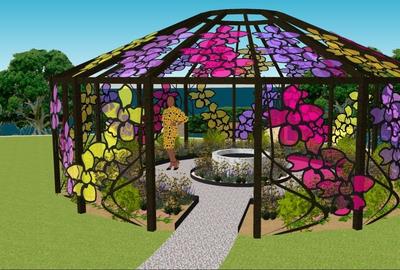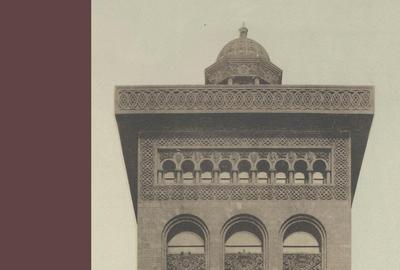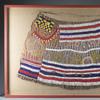Pulitzer Arts Foundation Transforms Church Ruins into Space for Art and Community
- ST. LOUIS, Missouri
- /
- June 07, 2022
In 2001, a Gothic-revival-style church located in the Grand Center Arts District of St. Louis, Missouri, was destroyed by fire, with only its architectural shell still standing. Known as the “Spring Church,” the remaining structure became a beloved community landmark and the site of impromptu gatherings and other events. Now, the Pulitzer Arts Foundation has announced that the structural shell of the Spring Church has been preserved in order to create a safe and welcoming open air public space and site for artist projects. Located at 620 North Spring Avenue—an easy walk from the Pulitzer’s museum building–the Spring Church is scheduled to open to the public this July.
The Pulitzer began improvements to the church in 2020 with a goal of stabilizing the structure while maintaining the architectural character of the building. The design was undertaken by St. Louis-based Kiku Obata & Company and McNealey Engineering, Inc., who were sensitive to the museum’s goals. The roofless church is open to the sky, retaining a feature that has helped to make the building an iconic site in the neighborhood. Updates include accessible pathways, making repairs to the masonry, and adding infrastructure for electricity and lighting, among other upgrades.
In addition to the restoration of the Spring Church, the initiative also encompasses an adjacent lot that has undergone enhancements and will remain a publicly accessible green space. Designed by Studio Land Arts of Granite City, IL, this space includes seating and plants, integrating architectural elements from a former building that were unearthed during construction.
The Pulitzer’s transformation of the Spring Church follows that of Park-Like, a sustainably designed green space located across the street from the museum. Like Park-Like, the Spring Church will be open daily, free of charge, from sunrise to sunset.
Pulitzer Executive Director Cara Starke notes, “The Pulitzer is deeply committed to contributing to our neighborhood, expanding the visitor experience of the Foundation to include not only the museum at its heart, but also Park-Like and now the Spring Church. We look forward to welcoming our neighbors and visitors, whether it be to spend time in the space on their own terms, or to experience public art in the Spring Church’s unique architecture.”
Opening Events
The Spring Church will open to the public with a series of artist projects, celebrations, and community collaborations. In July, artist Jordan Weber will present a week-long public artwork and event series entitled All Our Liberations. Working with collaborators Weber met during his 2021 residency with the Pulitzer and Washington University in St. Louis, the artist will host a series of programs for both formerly incarcerated individuals and the public.
The opening celebration for the Spring Church will take place this October and include a performance with the St. Louis Symphony Orchestra InUnison Chorus. Other partnerships and projects will be announced this fall.
Background
The Gothic-revival-style Spring Church was built in 1884. Over the course of its lifetime, the church was home to four congregations. In 2001, a tragic fire forced its last congregation, the National Memorial Church of God in Christ, led by Reverend Robert Chatman Williams, to relocate, and the building was left as a ruin.
In 2003, Grand Center, Inc., the nonprofit organization behind St. Louis’s Grand Center Arts District, purchased the property with plans for an outdoor sculpture garden. Structural challenges prevented plans from coming to fruition, and the building remained an open shell. Since then, the church has become a unique and beloved site in St. Louis, serving as a location for a public art installation by Rainer Kehres and Sebastian Hungerer as part of The Light Project in 2008, and for many spontaneous photo shoots and events throughout the years.
In May 2020, the Pulitzer purchased the church and adjacent property and worked with structural engineers and architects to develop a plan to stabilize the structure and allow for public access to the building while maintaining its present-day character.
Project Team
Design Kiku Obata & Associates
Structural Engineer McNealy Engineering, Inc.
Consulting Structural Engineer Guy Nordenson and Associates
Conservation Wollenberg Building Conservation, LLC
Electrical & Civil Engineering Mazzetti
Landscape Design Studio Land Arts
Developer Owen Development
Historian Michael Allen, Preservation Research Office
About the Pulitzer Arts Foundation
The Pulitzer Arts Foundation is an art museum that offers meaningful experiences with art and architecture. The Pulitzer campus is located in the Grand Center Arts District of St. Louis, Missouri, and includes the museum, the Park-Like garden, the forthcoming Spring Church, and other outdoor spaces.
Since its founding in 2001, the museum has presented art from around the world in its celebrated building designed by Tadao Ando. Highlights have included the exhibitions Hannah Wilke: Art for Life’s Sake (2021-22); Terry Adkins: Resounding (2020-21); Ruth Asawa: Life’s Work (2018-19); Blue Black, a group show curated by artist Glenn Ligon (2017); Medardo Rosso: Experiments in Light and Form (2016-17); raumlaborberlin: 4562 Enright Avenue (2016); Reflections of the Buddha (2011-12); Urban Alchemy / Gordon Matta-Clark (2009-10); Dan Flavin: Constructed Light (2008); and Brancusi and Serra in Dialogue (2005). These exhibitions are complemented by programs that bring together leading figures from the fields of art, architecture, design, urban planning, and others. The Pulitzer brings art and people together to explore ideas and inspire new perspectives.
The museum is open Thursday through Sunday, 10am–5pm, with evening hours until 8pm on Friday. Outdoor spaces are open daily, sunup to sundown. Admission is free. For more information, visit pulitzerarts.org.
###

270x400_c.jpg)


















31100x100_c.jpg)



